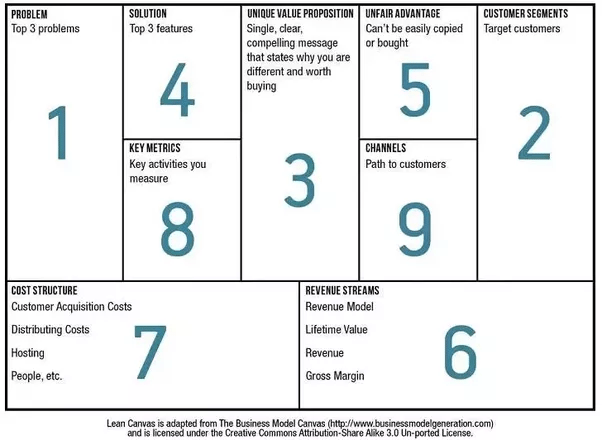90% of startups fail. That’s a hard number to swallow when you’re ready to break free of corporate slavery and go out on your own. This is normally because the founders have jumped headfirst into an idea without checking whether the world actually needs their game-changing product or service. This can all be avoided and you can test your startup idea without sinking thousands of dollars into it.

What is startup idea validation?
Startup idea validation is the process of ensuring a market fit and need. Are you solving a real problem? We get plenty of people coming to us saying “Hey! I’ve got this great idea that’s going to change the world, can you build it for us?” We can, but before we take any money, we always recommend validating their startup idea.
It’s a simple process where we ‘fake’ launch a product to test market response. If the response is positive, we move forward and proceed to design and build. If it’s lacklustre, we generally advise on any feedback and whether the idea is worth pursuing further. The setup can be done within a couple of hours, and the results within a day or two. The best part is, it can be done on the cheap - you could probably even do it for free.
Let’s jump in.
Step 1: Lean Canvas
If you’ve got a startup idea and you don’t know what a lean canvas is it’s time for an introduction. The Lean Canvas is a business plan, strategy and checklist all in one. It’s a one-pager that can be completed in the space of 5-10 minutes quickly and it will evolve over time.

Here’s the thing - if you can’t fill this out entirely and confidently then you may need to rethink your startup idea. It’s a really quick and cheap way of making sure the idea has all the legs it needs. There are plenty of learning resources and templates.
Get a free lean canvas template
Step 2: Pick a name, buy a domain
Don’t get caught up on this. Pick something really simple that reflects the industry of your brand. It can be generic - honestly, it’s just to put a name to a face.
For example, if your app is a football field finder - call it Pitch Finder. If it’s a cold-brew coffee rating app - call it Brew Rater. You can see the pattern forming here. The purpose is to validate your startup idea, not brand it.
I suggest using a domain searcher to check for name & domain availability while you’re trying to come up with the name - saves a lot of pain coming up with a great name only to realise that it’s not available to you. I recommend name.com for general domains and Crazy Domains if you need a .com.au domain name. Be sure to use Honey to get as many discounts as you can!

If you want to get a logo done extremely quickly and on the cheap, I recommend Fiverr. The designs can be hit and miss but I’ve had around a 75% hit rate with quality graphics. You can’t really complain for $5 - beggars can’t be choosers eh?
Step 3: Create a basic landing page
Here’s where the fun begins. You want to create a landing page as if your startup idea is already a product. Take the features you outlined in your Lean Canvas and write some brief copy around that. You can keep this pretty minimal. You only really need to have the following sections;
- A compelling title – why is your product unique?
- Features & benefits – pick three features and explain why they change the world.
- A call to action – Sign up now!
If you want to flesh it out there is a formula you can follow to create highly converting landing pages. Once again though - we are just validating your startup idea, not creating perfectly sculpted and refined copy. Brevity is key.
Once you’ve got your copy you can create landing pages with tools such as Unbounce or GetResponse. I’ve used both of them and personally prefer Unbounce. It’s essential you use these as they allow you to create drag-and-drop landing pages without any coding.
Most importantly - you need to have an email capture form. The reason we use Unbounce or GetResponse is that these are hooked up to their analytics directly. If you’re a coder you can use Google Analytics to set these up - but there’s really no point if we’re just trying to quickly check our startup idea.
Step 4: Facebook advertising!
Facebook advertising is a really cheap way to get your landing page in front of a highly targeted audience. You’re looking at around $50 per 1,000 impressions. They are extremely high quality as we can create a profile of who we want to get in front of. We want to target our ‘Customer Segments’ from your Lean Canvas.
For example - our startup idea “Brew Rater” for cold-brew coffee ratings. We know we’re probably looking for people around 17-40 in metropolitan areas (cold brew is pretty hipster) who are interested in cafes, brunch and coffee. That’s pretty specific!
Be sure to do a quick bit of research on how to write compelling facebook ads. This will be the initial hook for your target segment so it’s important to be punchy.
Facebook gives you free ad credit when you sign up. I suggest running the ad to max this out. That should be enough to get around 2000 impressions which is a good sample to test the market.
Step 5: Check results
The moment of truth! Is your startup idea really a good idea? When you check the results of your campaign and landing page, you’re looking for anything above a 5% conversion rate. Anything above 20% is stellar and you should 100% pursue the idea.
What’s next?
Did your campaign return good results? Get building! If you’ve got the money to bootstrap yourself you can find an agency to partner with and build the product for you. You might be shocked at the cost, but rest assured there's a method behind the madness. If you’re going solo, you can piece together existing technologies to create a prototype that you can take to investors to get funding. One thing is for sure - if you’ve validated your startup idea, you’re already ahead of the pack.

